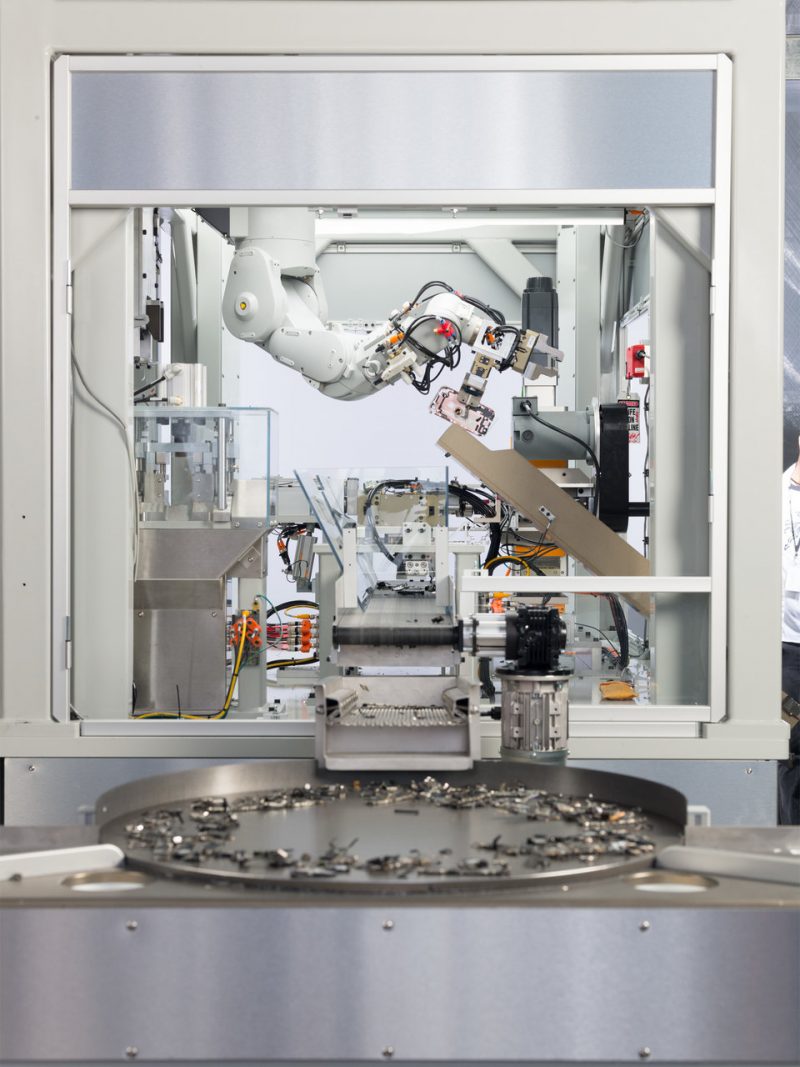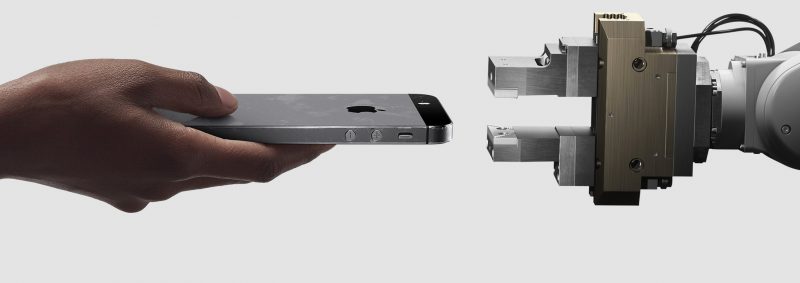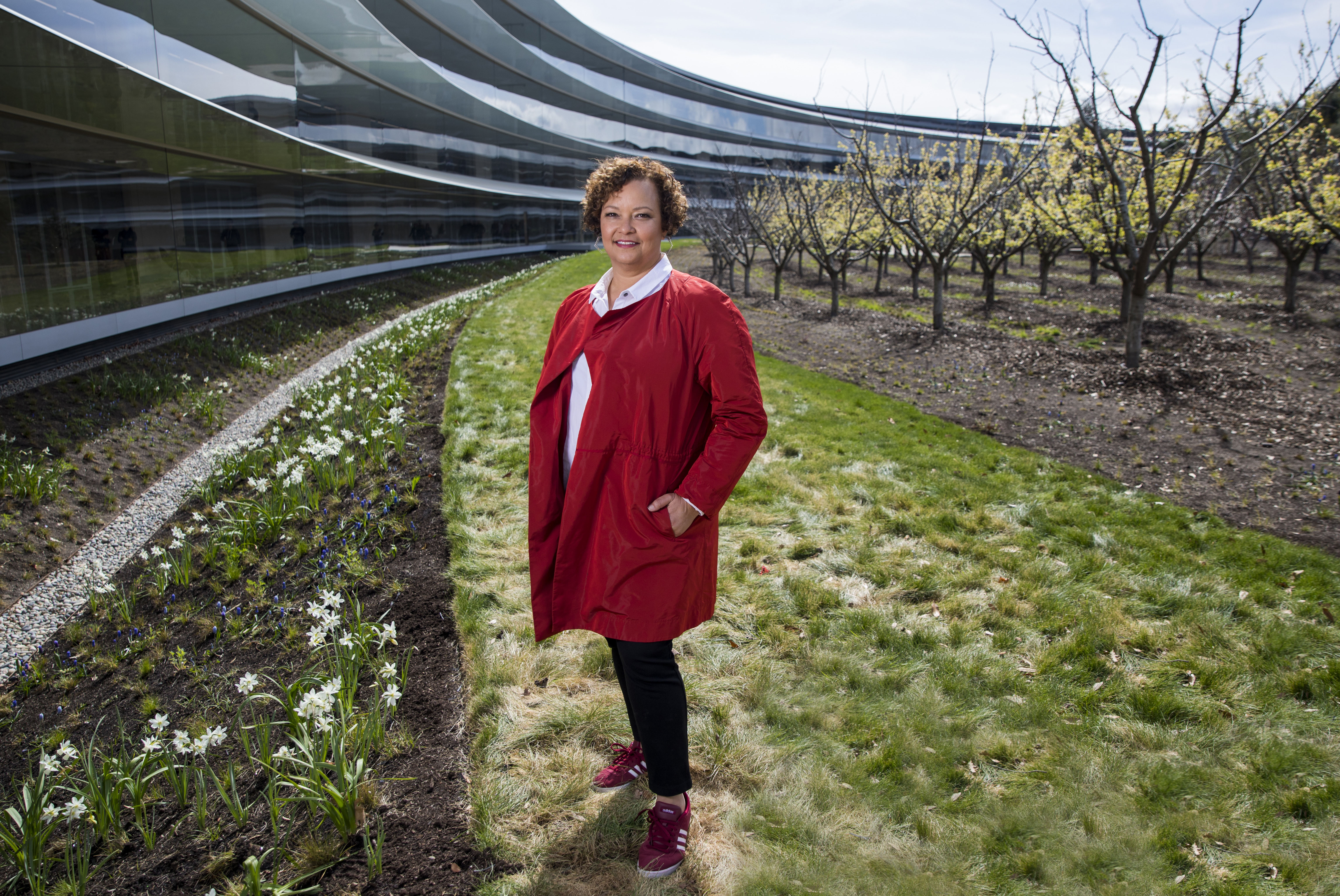- Apple announced the opening of a new materials recovery lab in Texas and upgrades to its Daisy robot, another effort in its goal toward eliminating the need to mine new materials from the earth.
- Lisa Jackson, Apple’s vice president of environment, policy, and social initiatives discussed the news in an interview with Business Insider.
- Jackson was named one of Business Insider’s 100 people transforming the world of business thanks to her role in spearheading such efforts at Apple.
When Lisa Jackson took the stage at Apple’s annual iPhone reveal in September, arguably the company’s most important moment of the year, she wasn’t there to discuss the new technologies in the iPhone Xs like other Apple executives who spoke during the company’s keynote.
Rather, as Apple’s vice president of environment, policy, and social initiatives, she highlighted an often less-publicized quality of Apple’s latest smartphones: the recycled materials used to create components like the main logic board and speaker enclosure. It was a sign of progress in what might be one of Apple’s most daunting and ambitious goals yet – eliminating the need to mine new materials from the earth to create new products. It’s an initiative that requires Apple to re-think many critical elements of its product life cycle, from supply chain logistics to what happens to worn-down devices that are no longer fit for use.
“It’s a big goal, it’s a long-term goal,” Jackson, who was recently named one of Business Insider’s 100 people transforming the world of business, said in a recent interview with Business Insider. “It’s meant to sort of put a North Star out there for all of us within the company to follow.”
Now, two years after Apple pledged its commitment to that objective, the company is taking another step toward that milestone under Jackson’s leadership. Apple announced on Thursday that it will open a new materials recovery lab in Austin, Texas to further boost its efforts around sourcing materials from discarded products.

Apple has also expanded the number of iPhone models Daisy can now disassemble to 15, up from nine when Apple unveiled the machine last year. The reveal comes one week after the company announced it nearly doubled the number of suppliers that have committed to running their Apple production on 100% clean energy.
Since joining Apple in 2013, Jackson has driven initiatives like Apple's decision to run on 100% clean energy and the Daisy recycling robot, which it announced in 2018 after debuting its first iPhone-dismantling machine called Liam in 2016. "We're feeling really good about the fact that we've watched this idea go from a pilot stage with Liam to full production stage in Daisy," Jackson said.
Managing the mounting buildup of electronic waste is a global issue that stretches far beyond the confines of Apple. Discarding used gadgets like smartphones, laptops, TVs, and other appliances could pose environmental and health risks and wastes valuable resources needed to produce electronics, as a 2016 report from the United Nations University notes. By 2016, 44.7 million metric tons of e-waste were generated around the world, the equivalent of 4,500 Eiffel Towers, the report says. By 2021, that's estimated to grow to 52.2 million metric tons of e-waste generated globally.
Apple's initiatives under Jackson come as advocacy groups have criticized the company and other large tech firms and accused them of kneecapping efforts to minimize manufacturing waste. In a report from Repair.org published in August 2017, author Mark Schaffer wrote that major tech manufacturers now hold so much power on green electronics standards boards that they can resist certain standards, arguing that this has made it too easy for companies to meet green criteria.
Jackson says durability and longevity is always top-of-mind for Apple. "[Customers] expect Apple quality, and we certainly don't want to disappoint them ever," Jackson said. "So a lot of the decisions we have to make are around materials that we believe will increase durability."
That notion combats a long-standing myth that Apple intentionally slows down older devices to encourage customers to upgrade to new ones. These suspicions hit a crescendo in 2017 when the company confirmed it throttles performance on older iPhones to prevent devices with aging batteries from randomly shutting down. In response to the controversy, Apple temporarily lowered the price of iPhone battery replacements from $79 to $29.
The success of Apple's trade-in and recycling programs are evidence that Apple prioritizes durability, says Jackson. The company has received nearly one million devices for Daisy to dismantle and 7.8 million iPhones that will be passed on to other customers as refurbished devices. "I think the testament to the durability of our devices is that they can be passed on to new users and people still get a lot of value from them," she said.
To make it easier to get end-of-life iPhones to Daisy, Apple is also launching a new recycling partnership with Best Buy in the United States and KPN in the Netherlands.

Product development at Apple isn't just about what goes into building a new iPhone, but also what goes into breaking it down when it's no longer fit for use so that the materials can be recycled by robots like Daisy. As such, Jackson's team collaborates closely with other departments within Apple like design, engineering, and operations. "That's a process that happens every day here at Apple," Jackson said. "You really can't commit to doing this kind of work if you don't make a whole of Apple commitment to it, and that's what this lab is all about."
The new 9,000-square-foot research and development lab opening in Austin will use robots like Daisy as well as machine learning and artificial intelligence to break new ground when it comes to recycling electronics. But it also serves as a resource for the company to learn. It's effectively a replica of an e-waste recycling facility where Apple engineers as well as academics will be able to conduct research to help solve big-picture challenges when it comes to handling e-waste. "This lab is not just going to be a place for people to go to learn about recovery, but a place for our designers and engineers to look at products as well."
As such, this facility will likely be crucial in helping Apple move toward its goal of eliminating the need to mine new materials from the earth to produce new products. Part of the reason why Apple considers this to be a long-term goal is because in some cases, new technology needs to be developed in order to make progress. Researching next-generation technologies for recycling will be one area of focus for Apple's new lab.
Jackson points to the technology around the recycling of cobalt, a material used in batteries for the iPhone, and the supply chain logistics required to integrate cobalt back into Apple products as one such example. "We can't just go out and spec recycled material," she said. "So if you can't spec it, you have to find a way to make it. And then you have to scale that."
Apple is already moving forward on that front. Recycled cobalt is being used to make batteries for new Apple products, and starting in 2019 aluminum recovered through Apple's Trade-In program is being used in the enclosures for the MacBook Air.
Apple is still far from its moonshot goal of creating all of its products from renewable and recyclable materials. But these kinds of victories make Jackson confident that Apple will get there. "I think that's one of the places where we are going to be able to contribute something new to the world," she said.

